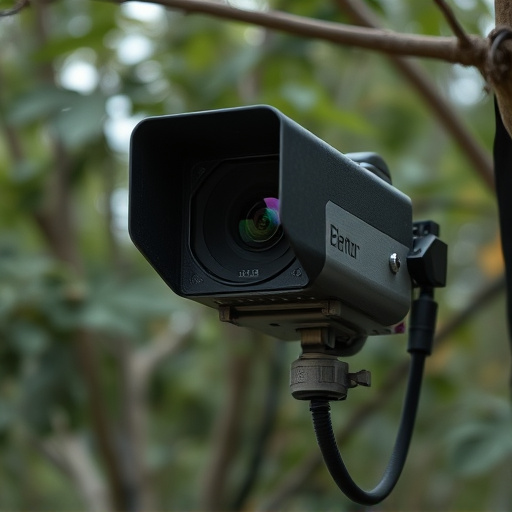Mastering decoy deployment is an art in counter surveillance, using most realistic looking security decoys to confuse and misdirect observers. These include fake cameras, dummy phones, and signal jammers strategically placed to mimic heavy monitoring, enhancing security posture. Advanced tools like holograms and lifelike mannequins replicate patterns, diverting hostile forces and protecting assets. Post-sweep analysis evaluates their effectiveness against potential threats, refining future strategies based on insights gained.
“In today’s world, privacy is a precious commodity. Protecting sensitive information from surveillance sweeps has become an art form. This comprehensive guide delves into the professional methods of countering surveillance sweeps, empowering individuals and organizations with advanced techniques. From mastering decoy deployment to strategic placement tactics, we explore realistic options for every scenario. Learn how to mimic and deceive with the most authentic-looking security decoys available, and analyze post-sweep data to refine your strategies.”
- Decoy Mastery: Realistic Options for Every Scenario
- Placement Tactics: Strategize to Foil Surveillance Devices
- Advanced Techniques: Mimicry and Deception at Their Finest
- Post-Sweep Analysis: Learn from Every Countermeasure Taken
Decoy Mastery: Realistic Options for Every Scenario
In the realm of counter surveillance, decoy mastery is an art that professionals employ to throw off would-be watchful eyes. The key lies in selecting and deploying the most realistic looking security decoys for every scenario. From heat signature mimics to high-fidelity holograms, these advanced tools offer effective countermeasures against modern surveillance techniques. By integrating such decoys into a comprehensive sweep strategy, professionals can create a deceptive environment that confuses and misdirects potential observers.
For instance, in urban settings, strategically placed mannequins or robotic devices can mimic human behavior, while rural areas might benefit from reflective materials that distort drone views. The most realistic looking security decoys are not one-size-fits-all; they must adapt to the unique challenges and environments of each operation. This versatility ensures that counter surveillance sweeps remain dynamic and unpredictable, making them powerful tools in the arsenal of any professional.
Placement Tactics: Strategize to Foil Surveillance Devices
When employing counter surveillance tactics, strategic placement of decoys is key. Professionals often utilize the most realistic-looking security decoys available to mislead and foil potential surveillants. These decoys can range from fake cameras that mimic the appearance and movement of real ones to dummy phones or wireless devices that emit signals to confuse tracking devices. By strategically placing these decoys in areas where surveillance equipment might be expected, individuals or organizations can significantly enhance their security posture.
For instance, positioning highly realistic decoy cameras in various spots, even in areas without actual surveillance equipment, can deter real cameras from capturing sensitive information. Similarly, using dummy phones or signal jammers can disrupt tracking signals, making it harder for trackers to follow movements or locate devices. The goal is to create an environment that appears heavily monitored but, in reality, has many false leads, thereby protecting privacy and security.
Advanced Techniques: Mimicry and Deception at Their Finest
In the realm of counter surveillance, mimicking and deceiving adversaries has become an art form. Professionals now employ advanced techniques that blur the line between reality and simulation, creating scenarios that are almost indistinguishable from genuine operations. One of the most innovative tools in their arsenal is the development of most realistic looking security decoys. These decoys range from highly detailed mannequins to sophisticated holographic projections, each designed to mislead and distract potential threats.
By employing these cutting-edge methods, counter surveillance teams can create convincing illusions that not only divert attention but also gather crucial intelligence. The art of mimicry allows them to replicate patterns, behaviors, and environments with such precision that it becomes a powerful strategic tool. This level of deception ensures that real assets are kept safe while simulating activity that could potentially draw in or misdirect hostile forces.
Post-Sweep Analysis: Learn from Every Countermeasure Taken
After completing a counter surveillance sweep, it’s crucial to engage in thorough post-sweep analysis. This involves meticulous review of every decoy and countermeasure deployed, examining their effectiveness against potential threats. By studying what worked and what didn’t, security professionals can gain invaluable insights into adversary tactics and adjust future strategies accordingly.
The process includes evaluating the most realistic-looking security decoys used, analyzing their placement, and understanding how they disrupted or deceived surveillance efforts. This analysis should also consider environmental factors, human behavior, and technological advancements that could influence the success of countermeasures. The goal is to create a comprehensive learning experience from each sweep, refining strategies to better protect individuals, organizations, and sensitive information in the future.
In conclusion, counter surveillance sweeps require a multi-faceted approach leveraging advanced techniques like decoy mastery, strategic placement, and post-sweep analysis. By employing the most realistic-looking security decoys and mastering strategies to foil surveillance devices, professionals can enhance their defenses significantly. The article’s comprehensive guide equips readers with essential tools to navigate today’s surveillance landscape, fostering a robust security tapestry that keeps pace with evolving technologies.
